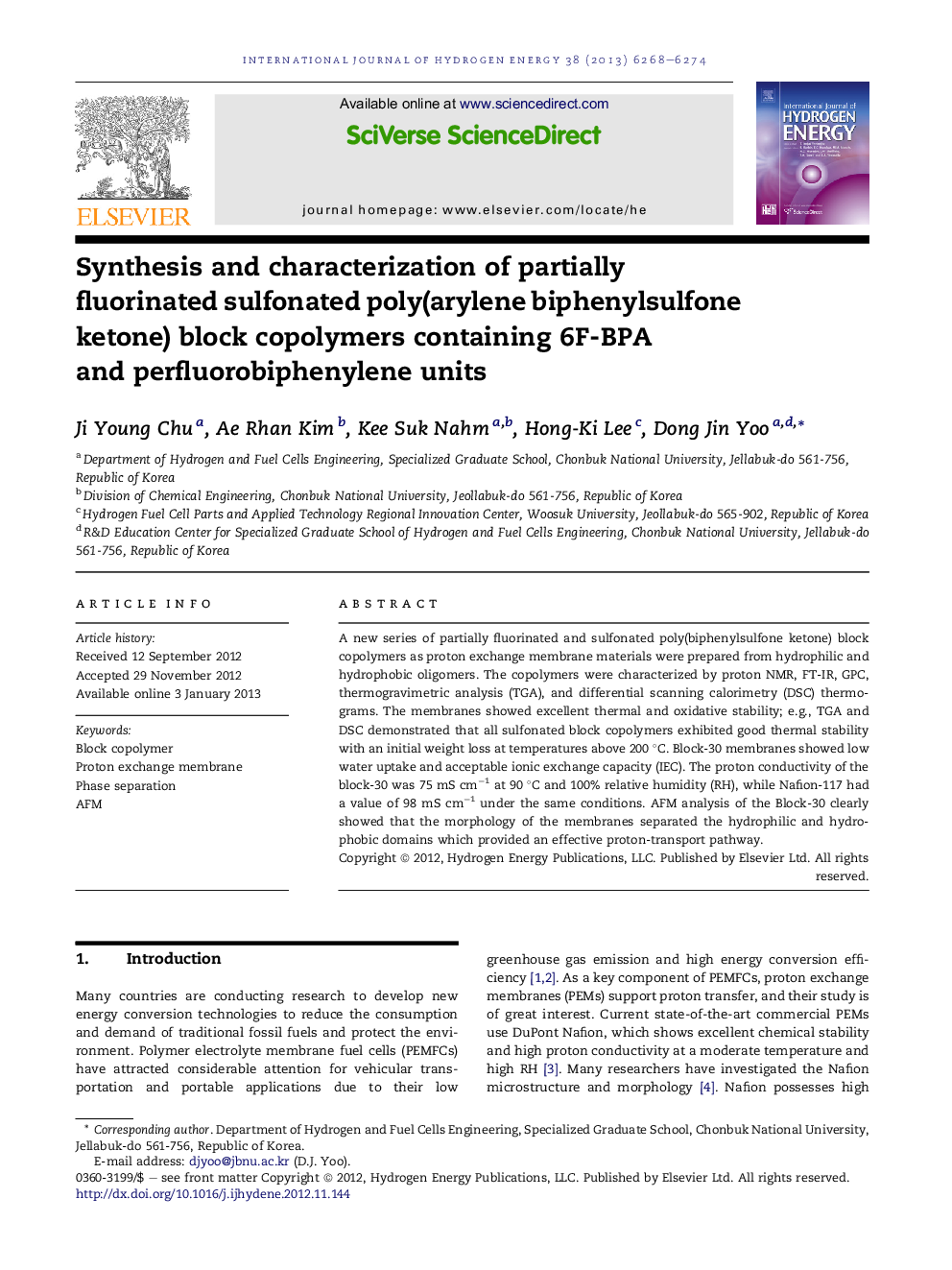| کد مقاله | کد نشریه | سال انتشار | مقاله انگلیسی | نسخه تمام متن |
|---|---|---|---|---|
| 1281750 | 1497531 | 2013 | 7 صفحه PDF | دانلود رایگان |

A new series of partially fluorinated and sulfonated poly(biphenylsulfone ketone) block copolymers as proton exchange membrane materials were prepared from hydrophilic and hydrophobic oligomers. The copolymers were characterized by proton NMR, FT-IR, GPC, thermogravimetric analysis (TGA), and differential scanning calorimetry (DSC) thermograms. The membranes showed excellent thermal and oxidative stability; e.g., TGA and DSC demonstrated that all sulfonated block copolymers exhibited good thermal stability with an initial weight loss at temperatures above 200 °C. Block-30 membranes showed low water uptake and acceptable ionic exchange capacity (IEC). The proton conductivity of the block-30 was 75 mS cm−1 at 90 °C and 100% relative humidity (RH), while Nafion-117 had a value of 98 mS cm−1 under the same conditions. AFM analysis of the Block-30 clearly showed that the morphology of the membranes separated the hydrophilic and hydrophobic domains which provided an effective proton-transport pathway.
AFM phase images: (a) Nafion-117 and (b) Block-30 membranes.Figure optionsDownload as PowerPoint slideHighlights
► Studies reveal that block copolymers can offer reliable solid electrolyte membrane.
► Newly designed block copolymers were synthesized and thoroughly analyzed.
► The fabricated membranes were thermally and chemically very stable.
► The proton conductivity of 75 mS cm−1 has been achieved from Block-30.
► The proton channel formed by phase separation was well explained via AFM images.
Journal: International Journal of Hydrogen Energy - Volume 38, Issue 14, 10 May 2013, Pages 6268–6274